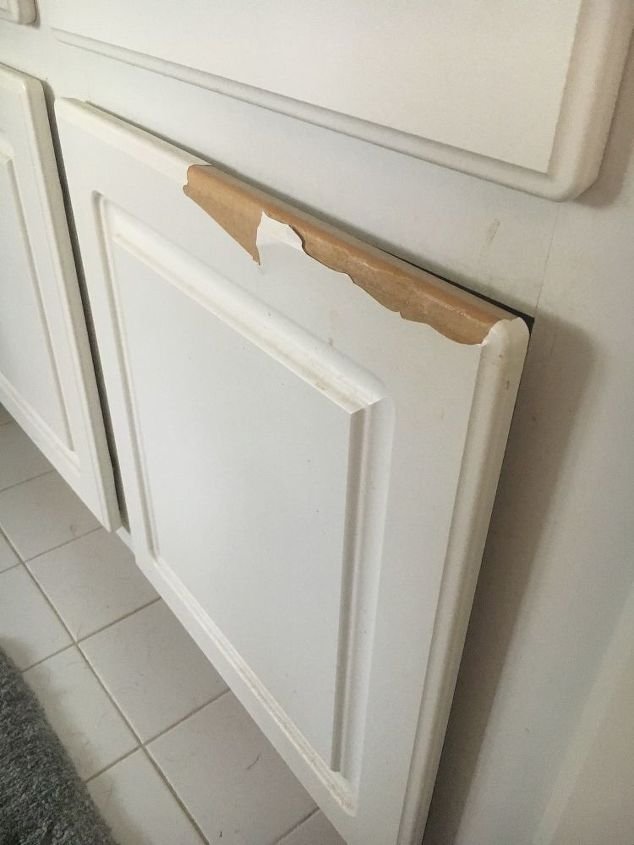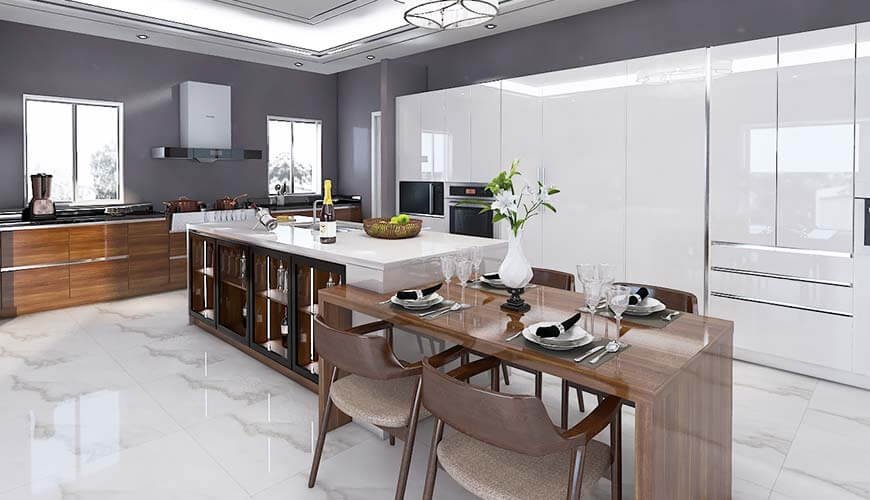Kitchen cabinets peel due to moisture exposure, poor quality materials, or improper installation. These factors weaken the adhesive or finish.
Peeling kitchen cabinets can be frustrating and unsightly. Moisture is a common culprit, often resulting from steam, spills, or leaks. Poor quality materials and finishes also contribute to this issue, as they lack durability. Improper installation or insufficient sealing can exacerbate the problem, making cabinets more susceptible to damage.
Addressing these issues promptly is essential to maintain the appearance and functionality of your kitchen. Regular maintenance and using high-quality materials can help prevent peeling and extend the life of your cabinets.
Table of Contents
ToggleCommon Causes Of Peeling Cabinets
Peeling kitchen cabinets can be a frustrating issue. Understanding the common causes can help you prevent and fix the problem. Let’s explore the main reasons why your cabinets might be peeling.
Moisture Damage
Moisture is a leading cause of peeling cabinets. Kitchens are prone to high humidity and water splashes. When water seeps into the cabinet material, it weakens the adhesive. This causes the surface layer to peel off.
Common sources of moisture include:
- Leaky pipes
- Sink splashes
- Steam from cooking
To protect your cabinets, ensure proper ventilation. Fix any leaks immediately and use a dehumidifier if needed.
Heat Exposure
Heat can also cause cabinets to peel. The kitchen is full of heat sources like ovens, stovetops, and microwaves. Excessive heat can weaken the adhesive holding the cabinet surface.
Heat sources that can affect your cabinets include:
- Ovens
- Stovetops
- Microwaves
To minimize heat damage, use heat shields and avoid placing appliances too close to the cabinets. Ensure good ventilation to dissipate heat effectively.
Quality Of Cabinet Materials
The quality of cabinet materials plays a crucial role in their durability. Substandard materials often lead to peeling and other issues. Understanding the materials can help you prevent this common problem.
Laminate Issues
Laminate cabinets are popular for their affordability and variety. But, they can face peeling problems due to their construction. Heat and moisture are the main enemies of laminate surfaces. These elements cause the adhesive to weaken over time.
Another factor is poor installation. If the laminate isn’t properly glued, it will peel sooner. Regular cleaning with harsh chemicals can also damage the laminate. It’s essential to use gentle cleaners to maintain them.
| Factor | Impact on Laminate |
|---|---|
| Heat | Weakens adhesive, causing peeling |
| Moisture | Swells the material, leading to peeling |
| Poor Installation | Leads to early peeling |
| Harsh Cleaners | Damages the surface, causing peeling |
Low-quality Paint
Using low-quality paint on cabinets is a common mistake. Cheap paint lacks durability and adhesion. Over time, it can chip and peel, especially in high-traffic areas.
Even the best paint needs proper preparation. Skipping primer or using the wrong type affects the paint’s longevity. Humidity and temperature changes also impact the paint. These conditions cause expansion and contraction, leading to peeling.
- Use high-quality paint for better durability.
- Always apply a primer before painting.
- Maintain a stable temperature and humidity in the kitchen.
Improper Cleaning Methods
Peeling kitchen cabinets can be frustrating. Often, the cause is improper cleaning methods. Understanding these methods helps keep your cabinets looking new.
Harsh Chemicals
Using harsh chemicals can damage your cabinets. Many cleaners contain strong solvents. These solvents break down the cabinet’s finish.
Here are some common harsh chemicals:
- Bleach
- Ammonia
- Acetone
Bleach can strip the finish. Ammonia can cause discoloration. Acetone can dissolve the protective layer. Avoid these chemicals to maintain your cabinets.
Abrasive Tools
Abrasive tools also harm your cabinets. Scrubbing pads and steel wool are too harsh. They scratch the surface.
Consider these alternatives:
| Abrasive Tool | Alternative |
|---|---|
| Scrubbing Pads | Soft Sponges |
| Steel Wool | Microfiber Cloths |
Use soft sponges and microfiber cloths. These tools clean without scratching. They help keep your cabinets in good condition.
Credit: www.reddit.com
Poor Installation Techniques
Have you noticed your kitchen cabinets peeling? One common cause is poor installation techniques. Let’s explore the key reasons behind this issue.
Incorrect Adhesive
Using the wrong adhesive can lead to peeling. Incorrect adhesive may not bond well with the cabinet material. This results in weak adhesion. Over time, this causes the cabinet surfaces to peel away.
Here are some common mistakes:
- Using a low-quality adhesive
- Choosing an adhesive not suitable for the material
- Applying too much or too little adhesive
Always use high-quality adhesive designed for your cabinet material. This ensures a strong bond and long-lasting finish.
Faulty Surface Preparation
Faulty surface preparation can also cause peeling. The cabinet surface must be clean before installation. Dust, grease, or old paint can interfere with adhesion.
Steps for proper surface preparation:
- Clean the surface thoroughly
- Sand the surface to remove imperfections
- Ensure the surface is dry before applying adhesive
Proper preparation ensures a smooth, durable finish for your cabinets.
Review the table below to understand the impact of poor installation techniques:
| Issue | Impact |
|---|---|
| Incorrect Adhesive | Weak bond, peeling |
| Faulty Surface Preparation | Poor adhesion, peeling |
By addressing these issues, you can prevent your kitchen cabinets from peeling.
Environmental Factors
Peeling kitchen cabinets can be frustrating and unsightly. Environmental factors often play a significant role in this issue. Understanding these factors can help you prevent further damage. Let’s explore how humidity levels and temperature fluctuations contribute to peeling cabinets.
Humidity Levels
High humidity levels can wreak havoc on your kitchen cabinets. Moisture can seep into the wood, causing it to swell and peel. Wood absorbs moisture from the air, leading to warping and peeling over time. To maintain optimal humidity levels, consider using a dehumidifier in your kitchen.
Here’s a simple table to understand the impact of different humidity levels:
| Humidity Level | Effect on Cabinets |
|---|---|
| Low (Below 30%) | Wood dries out, causing cracks |
| Optimal (30%-50%) | Maintains wood integrity |
| High (Above 50%) | Wood absorbs moisture, causing swelling and peeling |
Temperature Fluctuations
Frequent temperature changes can also damage your cabinets. Wood expands in heat and contracts in cold. This constant movement can weaken the adhesive, causing the finish to peel. Keeping your kitchen at a stable temperature can help prevent this issue.
Below are some tips to manage temperature in your kitchen:
- Use insulation to maintain consistent temperatures.
- Avoid placing cabinets near heat sources.
- Ensure proper ventilation to avoid overheating.
Managing humidity and temperature is crucial for the longevity of your kitchen cabinets. Make these adjustments to keep your kitchen looking great.
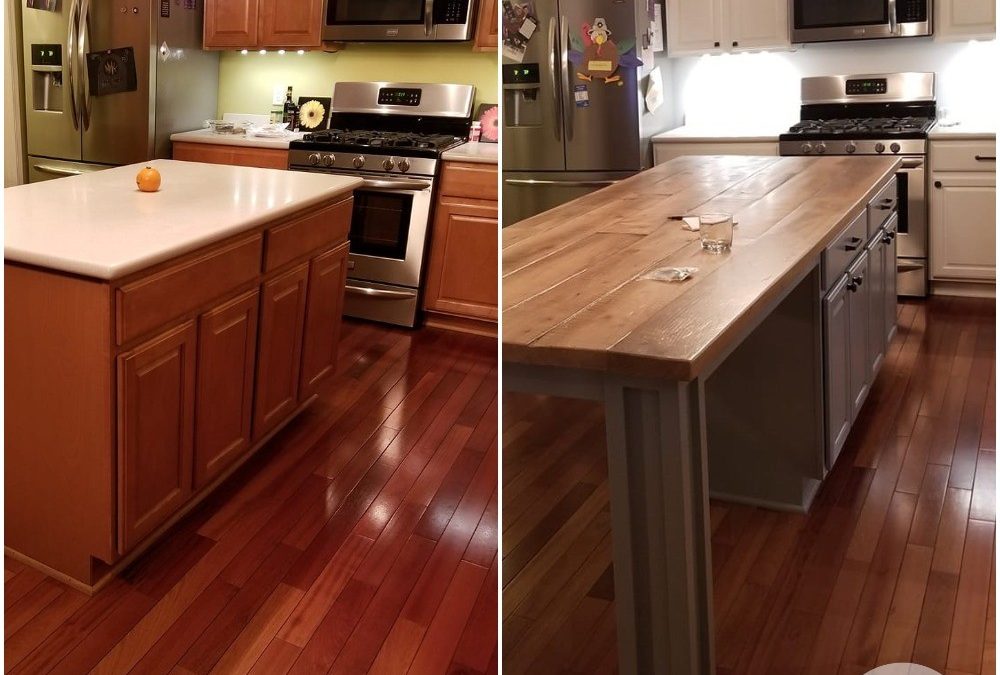
Credit: thepickypainters.com
Preventative Maintenance Tips
Peeling kitchen cabinets can be a major headache. Preventative maintenance helps you avoid this common issue. Following these simple tips can keep your cabinets looking fresh and new.
Regular Cleaning
Regular cleaning is crucial for maintaining your kitchen cabinets. Dust and grime can accumulate over time. Use a mild soap and warm water to clean your cabinets. Avoid harsh chemicals; they can damage the finish.
Here’s a simple cleaning routine:
- Wipe down surfaces weekly with a damp cloth.
- Clean greasy areas with a mixture of vinegar and water.
- Dry surfaces immediately to prevent moisture buildup.
Proper Ventilation
Proper ventilation can extend the life of your kitchen cabinets. Humidity and heat can cause the finish to peel. Make sure your kitchen has good airflow. Use exhaust fans while cooking to reduce moisture.
Consider these ventilation tips:
- Install an exhaust fan above the stove.
- Open windows to allow fresh air in.
- Use a dehumidifier if your kitchen is very humid.
By following these preventative maintenance tips, you can keep your kitchen cabinets in excellent condition. Regular cleaning and proper ventilation are simple steps that make a big difference.
Diy Fixes For Peeling Cabinets
Peeling cabinets can make your kitchen look old. You can fix them yourself. Doing it yourself saves money. It also gives your kitchen a new look.
Repainting
Repainting is a simple fix for peeling cabinets. Follow these steps to repaint your cabinets:
- Clean the cabinets: Use soap and water. Remove grease and dirt.
- Sand the surface: Sand the peeling area lightly. This helps the paint stick better.
- Apply primer: Use a good primer. Let it dry completely.
- Paint the cabinets: Use high-quality paint. Apply two coats for a smooth finish.
Refacing
Refacing is another great option for peeling cabinets. It involves updating the cabinet doors and fronts. This gives your kitchen a new look without replacing the cabinets.
Materials needed:
- New cabinet doors
- Veneer or laminate
- Strong adhesive
- Trim pieces
Steps to reface cabinets:
| Step | Description |
|---|---|
| 1 | Remove old doors and fronts. |
| 2 | Clean the cabinet frames thoroughly. |
| 3 | Apply veneer or laminate to the frames. |
| 4 | Attach new doors and fronts. |
| 5 | Add trim pieces for a finished look. |
Refacing is less messy than repainting. It also offers a fresh look quickly.
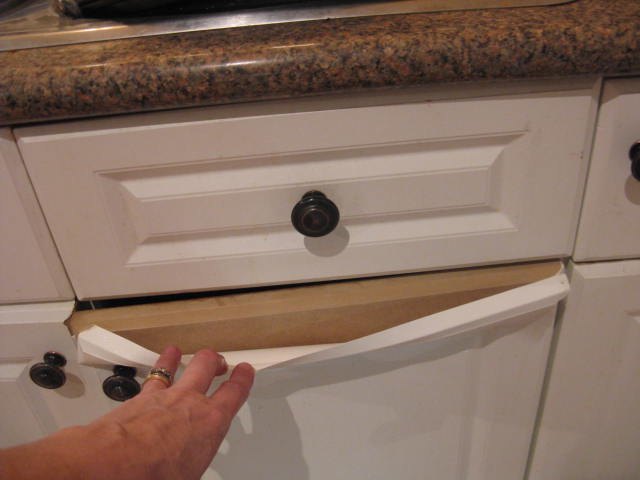
Credit: www.hometalk.com
When To Call A Professional
Kitchen cabinets are a vital part of your home. They store your cookware, dishes, and food. But peeling cabinets can be an eyesore. Sometimes, fixing them yourself is not an option. This is where calling a professional comes in handy. Professional help ensures your cabinets look new and last longer.
Severe Damage
Severe damage can make your cabinets look old. If large sections are peeling, it’s time to call a pro. A professional can assess the extent of the damage. They have the tools to fix large areas. DIY fixes might not hold up over time. Professionals use high-quality materials. This ensures a long-lasting repair.
Long-term Solutions
Short-term fixes might save you money now. But they might cost you more in the long run. Professionals offer long-term solutions. They can suggest better materials. They also provide expert craftsmanship. This can increase the lifespan of your cabinets.
| Issue | DIY Fix | Professional Fix |
|---|---|---|
| Minor Peeling | Glue and Clamp | Refacing |
| Severe Peeling | Patchwork | Replacement |
| Water Damage | Temporary Seal | Waterproof Solutions |
Calling a professional for your peeling cabinets can save you time. It can also save you money in the long run. They provide long-term solutions and ensure high-quality repairs.
Frequently Asked Questions
Why Are My Kitchen Cabinets Peeling?
Moisture and humidity can cause the paint or veneer to peel off your kitchen cabinets.
How To Fix Peeling Kitchen Cabinets?
Sand the peeling area, apply primer, and repaint or reapply veneer for a fresh look.
Can Humidity Cause Cabinets To Peel?
Yes, excessive humidity can weaken the adhesive and cause the paint or veneer to peel.
Are Peeling Cabinets A Sign Of Poor Quality?
Not necessarily. Even high-quality cabinets can peel due to improper care or environmental factors.
How To Prevent Kitchen Cabinets From Peeling?
Maintain proper ventilation and clean cabinets regularly to prevent moisture buildup and peeling.
What Type Of Paint Is Best For Cabinets?
Use high-quality, moisture-resistant paint designed specifically for kitchen cabinets.
Can Peeling Cabinets Be Restored?
Yes, sanding and repainting or reapplying veneer can restore the appearance of peeling cabinets.
Is It Expensive To Fix Peeling Cabinets?
Costs vary depending on the extent of the damage and whether you hire a professional or do it yourself.
Do Steam And Heat Affect Cabinet Peeling?
Yes, steam and heat can weaken adhesives and cause the paint or veneer to peel.
Should I Replace Peeling Cabinets?
Replacement isn’t always necessary. Often, sanding and repainting can effectively restore peeling cabinets.
Conclusion
Peeling kitchen cabinets can be frustrating but addressable. Identify the root cause, whether moisture, poor materials, or improper installation. Regular maintenance and quality materials can prevent future issues. Keep your kitchen looking fresh and functional by tackling peeling cabinets promptly.
Remember, a beautiful kitchen starts with well-maintained cabinets.
